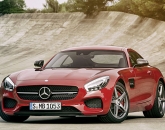
But does it drive as well as it looks? I collected one in southern Italy and drove to Sicily to make the first lap of the old Targa circuit in the new model which bears its name. A colossal rainstorm on the way down proved the water-tightness provided by that fabric roof section: there was literally no difference to the insulation I’d have enjoyed in the standard Carrera which I use as my daily road car. And the four-wheel drive which is standard on the Targa showed its worth through patches of standing water: all of this will be of interest and relevance to Hong Kong drivers.
On the circuit itself, the Targa was the perfect companion, but for surprising reasons. Yes, it’s hugely fast with its 400hp 3.8-litre ‘S’ engine (there’s a standard 350hp version too). Its 4.6sec 0-100km/h time is as fast as those original Targa race cars, and they didn’t benefit from Porsche’s amazing PDK paddle-shift seven-speed gearbox. Equipped with the sports exhaust, the new Targa sound as good as they did too. The only criticism is that I could feel the Targa’s additional 90kgs by comparison with my own car. A driver new to 911s wouldn’t notice.
But the Targa’s big advantage through the steeply-angled mountain-village streets, and over the open mountain roads which are now in very poor condition, was its usability. It has strong brakes, decent ground-clearance and feels bullet-proof in a way that more extreme (Italian) supercars don’t: leaving me free to retract the roof, soak up the sun and enjoy taking the Targa back to its roots.
SCORECARD
How much? TBA
Engine: 3800cc flat-six, 400hp
Transmission: 7-speed PDK twin-clutch automated manual
Performance: 0-100km/h in 4.6secs, 294km/h
How heavy? 1,575kgs

Pages
Click here to see the published article.











